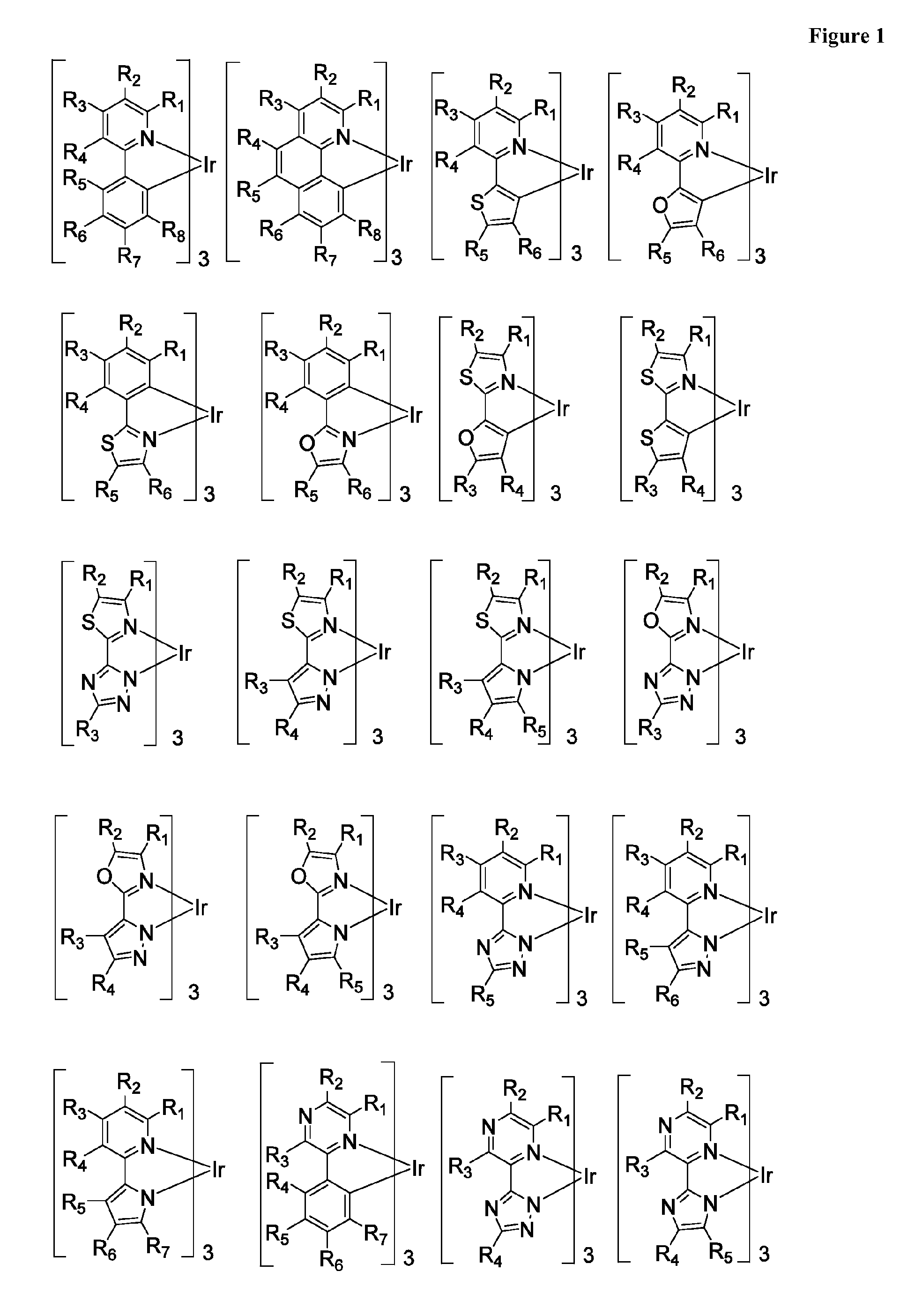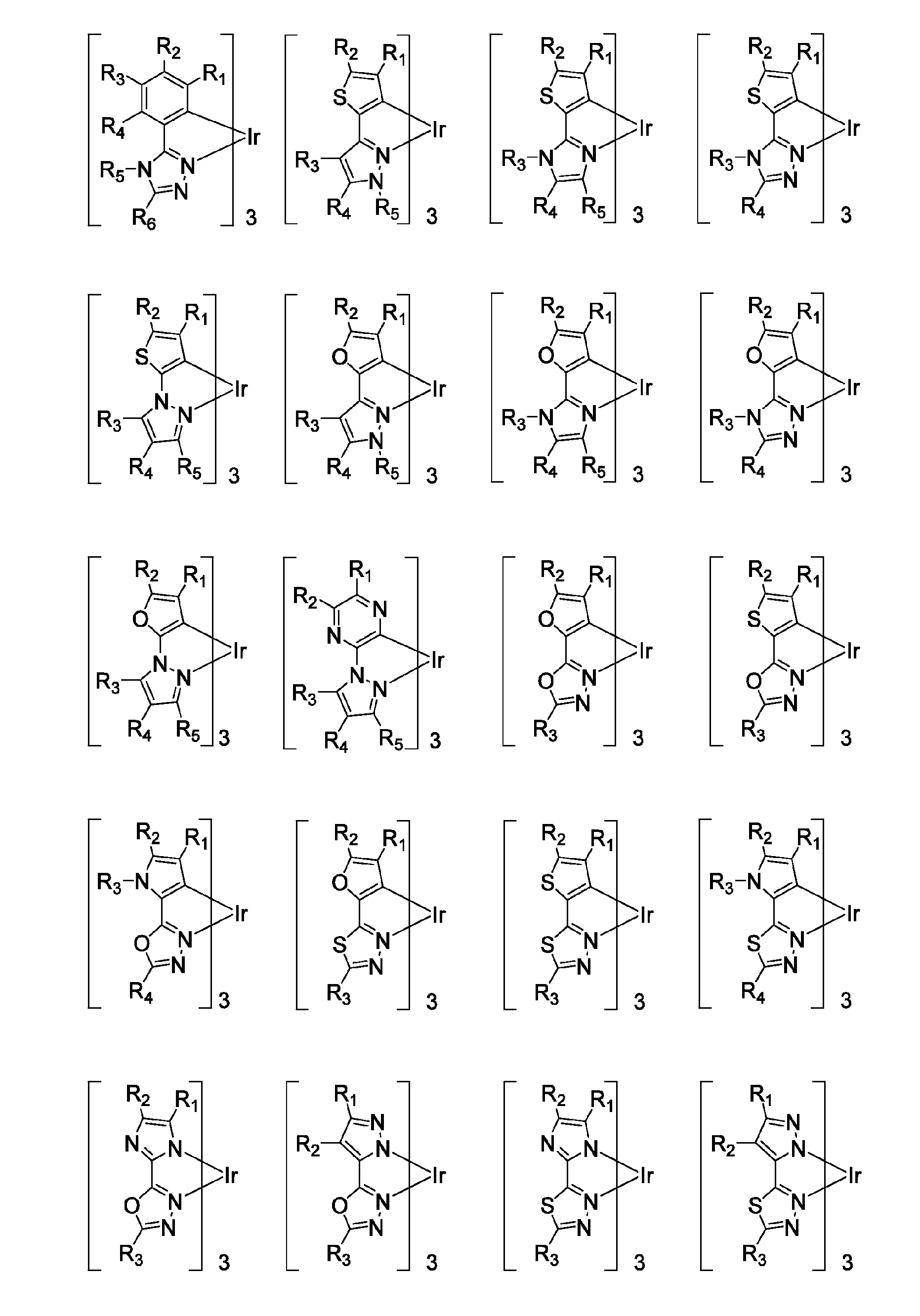Functionalized triplet emitters for electro-luminescent devices
a technology of electroluminescent devices and emitters, applied in the direction of luminescent compositions, organic chemistry, indium organic compounds, etc., can solve the problems of complex processing of small phosphorescent molecules into thin film devices such as oleds, and the quantum efficiency of electroluminescence (el) is severely limited, so as to simplify the fabrication cost of oleds, reduce the interaction between adjacent complexes, and suppress triplet-triplet annihilation and sel
- Summary
- Abstract
- Description
- Claims
- Application Information
AI Technical Summary
Benefits of technology
Problems solved by technology
Method used
Image
Examples
example 1
Synthesis of Example 1
[0103]μ-dichlorotetrakis(2-(3-bromophenyl-3-bromopyridinato-κN,C)diiridium (97 mg, 0.086 mmol) and diphenyl-[4-(4,4,5,5,-tetramethyl[1,3,2]dioxaboralane-2-yl)amine (239 mg, 0.65 mmol) and sodium carbonate (137 mg, 1.29 mmol) were added distilled toluene (50 mL), absolute ethanol (20 mL) and distilled water (15 mL). The white suspension was degassed for half an hour before tetrakis(triphenylphosphine)palladium (30 mg, 0.026 mmol) was added. The yellow biphasic mixture was heated to 80° C. and stirred under N2 overnight. The mixture was cooled down to room temperature. The organic phase was separated and the aqueous phase was extracted with DCM (3×50 mL). The combined organic extracts were dried over MgSO4 and the solvent was removed under vacuum to yield a red oil. The crude product was then purified by silica column chromatography with DCM / Hexane (1:2) as eluent and afforded a yellow solid (30 mg, 16.5%). 1H NMR (300 MHz, CDCl3): δb 6.91-7.02 (m, 9H, ArH), 7.05...
PUM
| Property | Measurement | Unit |
|---|---|---|
| quantum efficiency | aaaaa | aaaaa |
| internal quantum efficiency | aaaaa | aaaaa |
| emission decay time | aaaaa | aaaaa |
Abstract
Description
Claims
Application Information
 Login to View More
Login to View More - R&D
- Intellectual Property
- Life Sciences
- Materials
- Tech Scout
- Unparalleled Data Quality
- Higher Quality Content
- 60% Fewer Hallucinations
Browse by: Latest US Patents, China's latest patents, Technical Efficacy Thesaurus, Application Domain, Technology Topic, Popular Technical Reports.
© 2025 PatSnap. All rights reserved.Legal|Privacy policy|Modern Slavery Act Transparency Statement|Sitemap|About US| Contact US: help@patsnap.com



